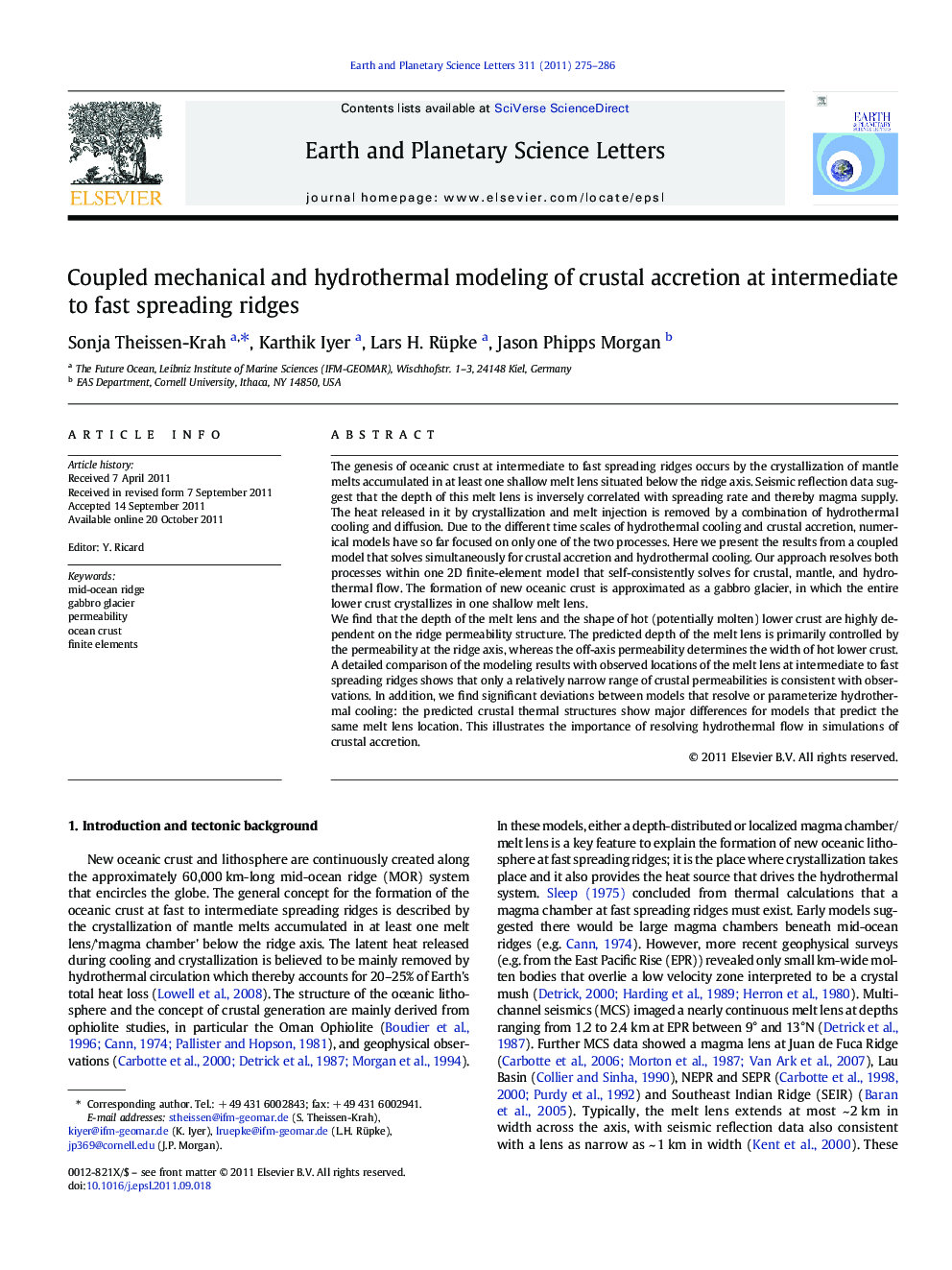| کد مقاله | کد نشریه | سال انتشار | مقاله انگلیسی | نسخه تمام متن |
|---|---|---|---|---|
| 4677807 | 1634817 | 2011 | 12 صفحه PDF | دانلود رایگان |

The genesis of oceanic crust at intermediate to fast spreading ridges occurs by the crystallization of mantle melts accumulated in at least one shallow melt lens situated below the ridge axis. Seismic reflection data suggest that the depth of this melt lens is inversely correlated with spreading rate and thereby magma supply. The heat released in it by crystallization and melt injection is removed by a combination of hydrothermal cooling and diffusion. Due to the different time scales of hydrothermal cooling and crustal accretion, numerical models have so far focused on only one of the two processes. Here we present the results from a coupled model that solves simultaneously for crustal accretion and hydrothermal cooling. Our approach resolves both processes within one 2D finite-element model that self-consistently solves for crustal, mantle, and hydrothermal flow. The formation of new oceanic crust is approximated as a gabbro glacier, in which the entire lower crust crystallizes in one shallow melt lens.We find that the depth of the melt lens and the shape of hot (potentially molten) lower crust are highly dependent on the ridge permeability structure. The predicted depth of the melt lens is primarily controlled by the permeability at the ridge axis, whereas the off-axis permeability determines the width of hot lower crust. A detailed comparison of the modeling results with observed locations of the melt lens at intermediate to fast spreading ridges shows that only a relatively narrow range of crustal permeabilities is consistent with observations. In addition, we find significant deviations between models that resolve or parameterize hydrothermal cooling: the predicted crustal thermal structures show major differences for models that predict the same melt lens location. This illustrates the importance of resolving hydrothermal flow in simulations of crustal accretion.
► Models solve simultaneously for crustal generation and hydrothermal circulation.
► Models match the depth to the melt lens with surface permeabilities of 3–6 × 10– 15 m2.
► Depth to the melt lens and width of the hot crust are sensitive to permeability.
► Depth vs. spreading rate relation may be used as proxy for on-axis permeabilities.
Journal: Earth and Planetary Science Letters - Volume 311, Issues 3–4, 15 November 2011, Pages 275–286